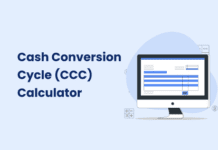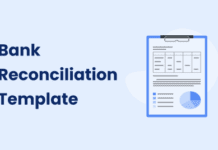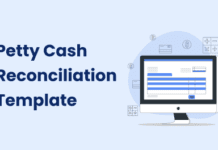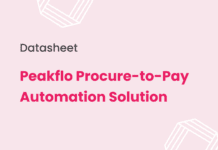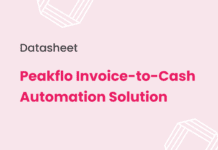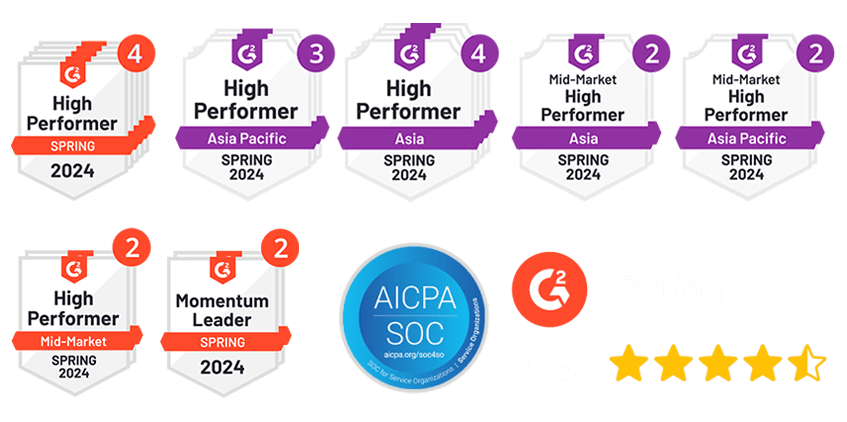Agentic AI workflows are becoming essential for businesses looking to automate complex processes that traditional AI solutions struggle to handle. These intelligent systems address a pressing challenge: workers currently spend 30% of their time simply searching for information, while most day-to-day work decisions still require constant human oversight.
The shift toward agentic AI workflows reflects a growing need for more capable automation. Unlike traditional GenAI solutions with their inherent limitations, these systems can evaluate situations and choose appropriate actions without constant human supervision. This capability is driving rapid adoption, with agentic AI workflows expected to integrate into 33% of enterprise software applications by 2028, up from less than 1% in 2024.
What are agentic AI workflows?
Agentic AI workflows are intelligent systems that combine advanced GenAI algorithms with agent technology to solve real business problems for enterprises. These workflows handle routine tasks, make smarter suggestions, and solve problems with minimal oversight, enabling approximately 15% of day-to-day work decisions to be made autonomously by 2028.
The key difference lies in their autonomous capabilities. While traditional workflows require constant human direction, agentic AI workflows can independently navigate complex scenarios. This independence creates a significant advantage: your team spends far less time on repetitive tasks, allowing them to focus on higher-value activities that require human expertise.
The combination of GenAI and agent technology creates something more powerful than either component alone. This synergy enables businesses to automate processes that were previously too complex or variable for traditional automation tools.
Why the Shift Toward Agentic AI Workflows
Image Source: Appian
Traditional AI approaches have hit a wall. Businesses are discovering that their current AI systems simply cannot handle the complexity of modern operations, creating a pressing need for more capable solutions.
Limitations of traditional AI agents
Traditional AI systems face several critical problems that prevent them from delivering reliable business value. Early-stage AI agents often get stuck in infinite feedback loops and struggle to create comprehensive plans. These systems are also highly vulnerable to breaking when external tools change, requiring frequent maintenance.
The computational costs alone make traditional systems impractical for many businesses. These conventional approaches demand extensive training for complex tasks and typically come with high computational costs. More importantly, today’s foundation models aren’t quite intelligent enough to reliably act as agents without human intervention for guidance or redirection.
Static data limitations
A major constraint lies in how traditional large language models operate. These systems are trained on static datasets representing information only up to a certain point in time. This creates significant limitations:
- They cannot actively gather new information after their training period
- They cannot directly interact with external tools or data processing systems
- They cannot autonomously set up systems to monitor ongoing data
Traditional AI also follows strict, pre-programmed instructions with little flexibility to adapt beyond its initial design. For businesses operating in dynamic environments where conditions constantly change, this rigidity becomes a serious handicap.
Need for better decision-making and adaptability
When unexpected situations arise, traditional systems fail
Traditional automation capabilities follow exact steps and can’t handle unexpected situations—when something unpredictable occurs, the entire process typically breaks down. This limitation forces businesses to maintain constant human oversight, defeating the purpose of automation.
Conventional AI systems rely heavily on predefined rules that require manual updates and adjustments. This dependence creates bottlenecks in workflow optimization and prevents businesses from scaling operations efficiently. Finance teams, in particular, struggle with these constraints when managing complex approval processes or handling diverse customer payment scenarios.
LLMs face additional limitations that hamper effective decision-making: they produce inaccurate outputs in some cases, remain fundamentally passive (not acting unless prompted), and struggle with complex workflows involving multiple steps or decision points. Their limited persistent memory also makes tracking context over extended interactions difficult.
Organizations need systems that can perceive environments, make autonomous decisions, and take action to achieve defined objectives—capabilities that traditional AI approaches simply cannot provide.
Agentic AI workflows vs agent workflows
Understanding the distinction between AI agents and agentic workflows helps clarify why businesses are making this shift. AI agents are self-directed systems designed to pursue objectives with autonomy, mimicking goal-driven reasoning through perception, decision-making, and action loops. They excel in dynamic environments where predefining every scenario is impractical.
Agentic workflows represent structured, goal-driven sequences where AI components are tightly orchestrated within a defined control flow. These workflows prioritize control, reliability, traceability, and predictability—making them ideal for environments where outcomes must be auditable.
Autonomy makes the difference
The key differentiator between agents and agentic workflows is autonomy. Agents are designed to take initiative and adjust behavior based on goals and outcomes, whereas agentic workflows structure the behavior of systems around clearly defined sequences and guardrails.
Most businesses benefit from hybrid architectures where workflows orchestrate agents as needed—allowing agents to handle complex sub-tasks while maintaining overall process governance and observability. This balanced approach enables organizations to harness agents’ adaptability while maintaining the robustness required in production environments.
How Agentic Workflows Solve Real Business Problems
Image Source: FabriXAI
Agentic AI workflows tackle challenges that previous generations of AI solutions couldn’t address effectively. These sophisticated systems are already delivering measurable benefits across industries through business process automation that adapts to complex, real-world scenarios.
Handling complex, multi-step tasks
Managing intricate business processes requires more than following predetermined rules. Agentic AI excels at breaking down complex problems into sequential tasks—each with its own context—and tackling them systematically while learning from previous conclusions and actions. Unlike traditional automation, these workflows approach problems iteratively, enabling AI agents to adapt dynamically and refine their actions over time.
Consider how an IT support workflow handles employee issues. When someone reports a wifi problem, an agentic workflow follows a dynamic troubleshooting process:
- Gathering detailed information through clarifying questions
- Executing diagnostic steps based on user responses
- Using appropriate tools by calling APIs or running scripts
- Iterating based on results rather than immediately escalating
- Learning from the resolution for future efficiency
This approach differs significantly from rule-based systems that simply follow predefined decision trees without adaptation or learning capabilities.
Synthesizing data from multiple sources
Businesses generate data across countless systems, but connecting the dots between different sources often proves challenging. Agentic workflows excel at integrating information from diverse sources to generate useful insights. These systems can autonomously explore vast research data sources, identifying relationships between seemingly unrelated information. They automatically link consumer sentiment with market performance metrics or competitive intelligence with industry trends.
Supply chain environments demonstrate this capability effectively. An AI agent functions as an autonomous orchestration layer across sourcing, warehousing, and distribution operations. Connected to internal systems like supply chain planning and warehouse management, plus external data sources including weather forecasts and supplier feeds, it continuously forecasts demand, identifies risks, and dynamically replans transport and inventory flows.
This data synthesis capability enables businesses to discover insights existing at data intersections—identifying opportunities and threats that traditional methods simply cannot detect.
Reducing time spent on repetitive work
The most immediate impact of agentic AI comes through dramatically reducing the time employees spend on routine tasks. These systems can modernize Windows-based .NET applications to Linux significantly faster using machine learning and automated reasoning, or decompose monolithic z/OS COBOL applications into individual components—reducing timeframes from months to minutes.
This time-saving extends across multiple departments. Customer service teams benefit from agentic AI that processes inquiries and rapidly searches through company documents for suitable answers, operating around the clock to reduce burdens on human teams. Incident response becomes more efficient as these systems expedite the entire process—rolling back issues, creating reports, and notifying team members—improving time-to-recovery while providing more specific post-incident analysis.
Finance operations see similar improvements. Agentic workflows process invoices and manage approvals in a fraction of the usual time, reducing bottlenecks for faster turnaround. Rather than simply automating existing processes, these workflows redefine how organizations operate, adapt, and create value.
Architecture Behind Agentic AI Workflows
Image Source: link.springer.com
Understanding how agentic AI workflows operate requires examining their technical foundation. The architecture behind these systems stems from decades of computer science research, providing a robust framework that explains how they achieve their remarkable capabilities in business environments.
MAPE loop: monitor, analyze, plan, execute
The technical core of agentic AI workflows operates on the MAPE control loop—initially developed by IBM in the 1990s as a blueprint for autonomic computing. This foundational concept has evolved into the backbone of modern agentic systems, creating a continuous feedback cycle that enables intelligent adaptation.
The MAPE loop functions through four sequential stages:
1. Monitor: Systems constantly collect data from various sources, including sensors, databases, and APIs
2. Analyze: Advanced algorithms process information to identify patterns and insights
3. Plan: The system determines appropriate actions based on the analyzed data
4. Execute: Actions are implemented, often triggering other agents to accomplish objectives
Machine learning has dramatically enhanced the analysis and planning components in contemporary implementations, incorporating both generative AI and conventional models. This evolution enables agentic workflows to handle complex scenarios requiring both flexibility and precision—capabilities that traditional automation simply cannot match.
Technical definition and core components
Agentic AI workflows are a structured series of steps carried out by autonomous AI agents to achieve specific goals. These workflows distinguish themselves through several defining characteristics that set them apart from conventional automation.
They operate independently, making decisions and taking actions with minimal human intervention. Additionally, they respond adaptively to changing conditions through continuous learning and real-time data processing. Most importantly, they employ sophisticated reasoning mechanisms to formulate multi-step strategies and execute complex sequences based on evolving circumstances.
From an architectural perspective, these workflows require essential components, including specialized AI agents, large language models, tools for external interaction, feedback mechanisms, prompt engineering capabilities, and system integrations. The integration of these components creates a system capable of handling the dynamic challenges that businesses face daily.
Coordination between multiple agents
Multi-agent systems represent the most sophisticated implementation of agentic workflows. These systems involve multiple specialized agents working within shared environments, each handling different aspects of complex processes.
Coordination between agents occurs through various architectural patterns. Vertical architectures implement hierarchical relationships where leader agents oversee subtasks. Alternatively, peer collaboration models enable agents to work as equals in decentralized systems. Hybrid approaches combine structured leadership with collaborative flexibility.
The orchestration layer serves as the critical component maintaining global context and managing workflow across all agents. This orchestration enables dynamic task allocation, seamless handoffs between specialized agents, and adaptive coordination based on intermediate results. For businesses, this means complex processes can be broken down and handled by specialized agents working together, rather than requiring human coordination at every step.
Agentic AI Workflows Examples and Use Cases
Image Source: Encord
Businesses across different industries are finding practical ways to implement agentic AI workflows. These real-world applications show how organizations can address specific operational challenges while achieving measurable results.
Agentic RAG for research and summarization
Agentic Retrieval Augmented Generation (RAG) builds on traditional RAG systems by incorporating AI agents that increase adaptability and accuracy. The key advantage lies in how these systems handle information retrieval from multiple sources simultaneously while managing complex workflows. This makes them particularly valuable for enterprises that need current, accurate information across various domains.
Common business applications include real-time question-answering systems that provide instant responses to employee queries. Automated support services can escalate complex inquiries to humans when necessary, while enhanced data management helps employees quickly find information without manually sorting through databases.
Agentic research assistants
Research assistants powered by agentic AI can autonomously gather, analyze, and synthesize information across diverse sources. OpenAI’s Deep Research demonstrates this capability by using reasoning to synthesize large amounts of online information and complete multi-step research at the PhD level. During testing, Deep Research clarified the project scope through follow-up questions before synthesizing findings from 22 academic and industry sources.
Specialized systems like Otto-SR take this further by conducting literature searches, applying inclusion/exclusion criteria, extracting structured data, and performing meta-analyses with minimal human intervention. This capability significantly reduces the time research teams spend on routine data collection and analysis.
Agentic coding assistants
Coding tools with agentic capabilities go beyond simple autocomplete functions. They can write, review, debug, and test substantial code blocks autonomously. GitHub Copilot shows concrete results from this approach—one organization with 450 developers reduced development time by 20%. GoTo (formerly LogMeIn) reported even better results, achieving a 30% reduction in development time after deploying GitHub Copilot to approximately 1,000 developers.
Tools like Cursor AI Editor, Windsurf Editor, and Replit enable developers to build and deploy applications autonomously by selecting appropriate tools, generating code, and automating workflows. These systems handle complex programming tasks that traditionally required significant manual effort.
Customer support and marketing automation
Customer interactions benefit significantly from agentic AI systems that operate autonomously and adapt to different situations. Unlike basic chatbots, these agents can detect emotional tone, manage queries across multiple platforms, and handle real-time conversations using natural language processing.
The business impact is measurable. Real-world implementations have increased e-commerce conversion rates, reduced average handling time by 9%, and accelerated complaint resolution. Banking applications demonstrate additional value through real-time fraud detection, personalized financial guidance, and seamless onboarding experiences.
Supply chain and HR workflows
Supply chain operations gain resilience through agentic AI systems that predict disruptions, optimize logistics, and manage inventory dynamically. These systems continuously analyze real-time data from IoT devices, market trends, and supplier performance to optimize operations across procurement, warehousing, and distribution.
HR departments use agentic workflows to streamline employee onboarding, automate administrative tasks, and provide instant answers about company policies. This approach frees HR professionals from routine work while improving candidate experiences and employee retention. The result is more efficient HR operations that can focus on strategic initiatives rather than manual processes.
Benefits and Challenges of Agentic Workflows
Image Source: Chatbot.Expert
Implementing agentic AI workflows brings both substantial advantages and noteworthy challenges that organizations must carefully consider. Understanding these trade-offs helps businesses make informed decisions about adoption and implementation strategies.
Flexibility and adaptability
Agentic workflows stand apart from conventional automation through their inherent adaptability. Unlike deterministic workflows with fixed rules, agentic systems dynamically respond to changing inputs and environmental conditions. This adaptability enables them to adjust strategies based on task difficulty, ensuring solutions remain relevant as conditions shift.
Their modular architecture allows for customization and iterative improvements, helping organizations evolve their capabilities over time. This means workflows can handle unexpected situations without breaking down—a critical advantage when business conditions change rapidly.
Improved performance on complex tasks
The ability to break down intricate problems into manageable steps through task decomposition gives agentic workflows a distinct advantage with complex challenges. These systems continuously refine their approach to multifaceted tasks through planning and adaptive reasoning.
Early adopters report tangible benefits, including revenue increases up to 5%, operating expense reductions exceeding 10%, and capital efficiency improvements greater than 15%. Organizations using AI-powered decision support consistently experience fewer errors and more confident decision-making across departments.
Scalability and continuous learning
Perhaps most valuable is how agentic AI workflows adapt to growing demands without proportional resource increases. Unlike traditional systems, where doubling the workload might require doubling staff, AI solutions often handle significant growth with minimal additional investment.
These systems become increasingly effective through continuous learning—each interaction serves as an opportunity to analyze outcomes and adjust approaches automatically. This self-improvement happens without explicit programming as the AI identifies optimal strategies and adapts accordingly.
Challenges: complexity, reliability, and ethics
Despite their potential, agentic workflows present several significant hurdles that businesses must address proactively. Technical integration often proves difficult, particularly when connecting with legacy systems. Data quality issues can severely limit effectiveness, as these systems require good, accessible information to function properly.
Reliability concerns emerge as agents gain autonomy—their probabilistic nature introduces unpredictability that can be problematic in critical applications. AI hallucinations pose additional risks, potentially spreading incorrect information throughout agent networks.
The financial commitment remains substantial, with specialized talent commanding premium salaries, and infrastructure costs quickly accumulating. Organizational resistance frequently occurs as employees become concerned about automation’s impact on their roles.
Ethical considerations deserve careful attention, especially in high-stakes domains like healthcare and finance, where biased decisions could cause serious harm. As regulatory frameworks evolve, organizations must ensure their agentic systems maintain appropriate transparency and human oversight.
Managing these challenges requires a proactive approach that balances the benefits of automation with the need for control and accountability.
Peakflo Agentic Workflows: Autonomous AI for Every Business
Peakflo Agentic Workflows bring the power of autonomous AI to businesses across industries, helping teams tackle complex, multi-step processes with minimal supervision. From finance and HR to supply chain, customer support, and research, these workflows combine GenAI and specialized agents to make decisions, execute tasks, and adapt in real time—reducing repetitive work and boosting productivity.
Unlike traditional automation, Peakflo’s agentic workflows handle dynamic scenarios, synthesize data from multiple systems, and learn from past actions. For example, finance teams can streamline invoice approvals and payment follow-ups, supply chains can optimize logistics and forecast demand, HR teams can automate onboarding and employee queries, and customer support can provide real-time, context-aware assistance—all within a single, integrated platform.
Peakflo ensures autonomy without losing control. Built-in audit trails, observability, and configurable guardrails give teams confidence while scaling operations efficiently. By reducing bottlenecks, minimizing errors, and enabling smarter decision-making, these workflows allow employees to focus on high-value work rather than routine tasks.
No matter your industry or department, Peakflo Agentic Workflows transform operations, turning complex processes into seamless, adaptive systems that work for you.
Experience the future of business automation today—explore Peakflo Agentic Workflows and see how AI-driven autonomy can elevate your organization.
A Way Forward
Agentic AI workflows address real challenges that businesses face daily. These systems handle complex, multi-step processes that traditional automation cannot manage, while reducing the time your team spends on routine tasks. The key advantage lies in their ability to adapt and learn, making them suitable for dynamic business environments where conditions frequently change.
Success with agentic workflows requires more than just deploying new technology. Your data quality, system integration capabilities, and team readiness all influence outcomes. Organizations that approach implementation systematically—starting with well-defined use cases and building expertise gradually—tend to achieve better results.
The shift toward more autonomous business processes is already underway. By understanding how agentic workflows can address specific operational challenges, you can make strategic decisions about where and when to implement these systems effectively.
FAQs
Q1. What are agentic AI workflows? Agentic AI workflows are intelligent systems that combine advanced AI algorithms with agent technology to autonomously handle complex tasks and make decisions with minimal human oversight. They can adapt to changing circumstances, synthesize data from multiple sources, and significantly reduce time spent on repetitive work.
Q2. How do agentic AI workflows differ from traditional AI systems? Unlike traditional AI systems that follow strict, pre-programmed instructions, agentic AI workflows can evaluate situations, choose the best actions, and adapt to changing circumstances. They can handle complex, multi-step tasks, synthesize data from various sources, and continuously learn and improve their performance over time.
Q3. What are some real-world applications of agentic AI workflows? Agentic AI workflows are being used in various fields, including research and summarization, coding assistance, customer support, marketing automation, supply chain management, and HR processes. They can autonomously gather and analyze information, write and debug code, handle customer inquiries, optimize logistics, and streamline administrative tasks.
Q4. What are the main benefits of implementing agentic AI workflows? Key benefits include increased flexibility and adaptability to changing conditions, improved performance on complex tasks, scalability without proportional resource increases, and continuous learning capabilities. Organizations using agentic AI workflows have reported revenue increases, operating expense reductions, and improved capital efficiency.
Q5. What challenges are associated with agentic AI workflows? While powerful, agentic AI workflows come with challenges such as technical integration difficulties, especially with legacy systems, data quality issues, reliability concerns due to their probabilistic nature, and potential AI hallucinations. There are also ethical considerations, particularly in high-stakes domains, and the need for substantial financial investment in specialized talent and infrastructure.









![Why AI Sales Calls Are Making Good Sales Reps Even Better [2025 Guide] ai sales calls](https://cdn-kmjmp.nitrocdn.com/YvtqmrsiHUxqerlSiZgbfzqqTARWTElr/assets/images/optimized/rev-834053b/blog.peakflo.co/wp-content/uploads/2025/09/65168cf6-3001-4733-8cbc-12d5684cf449-218x150.webp)










